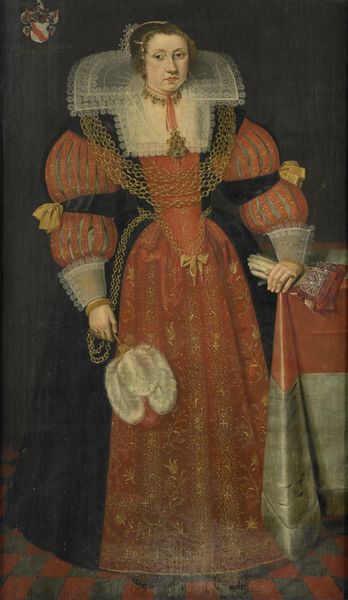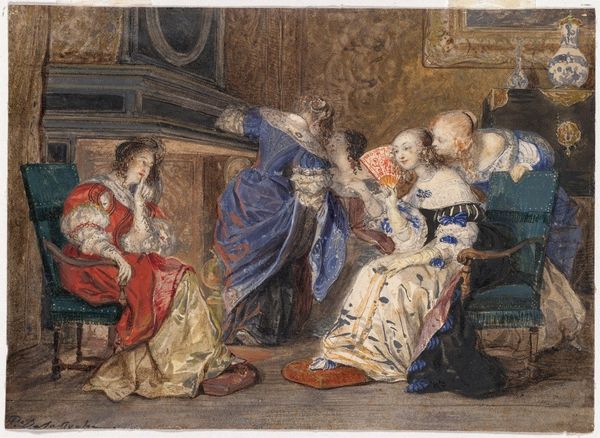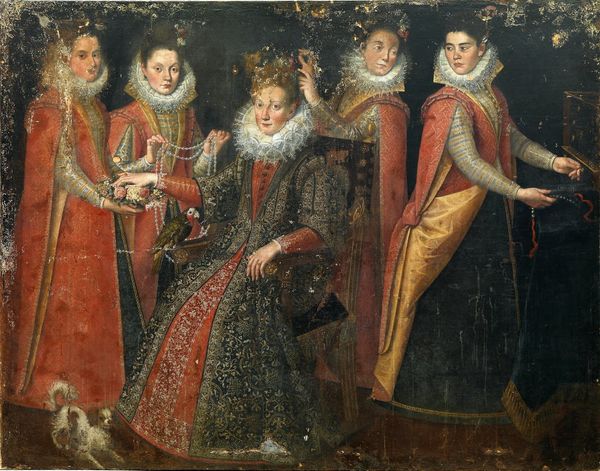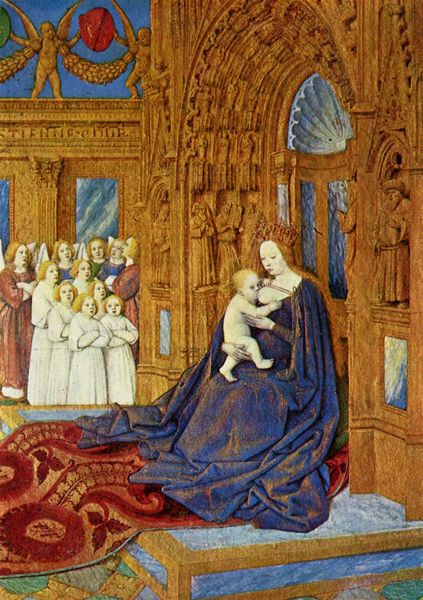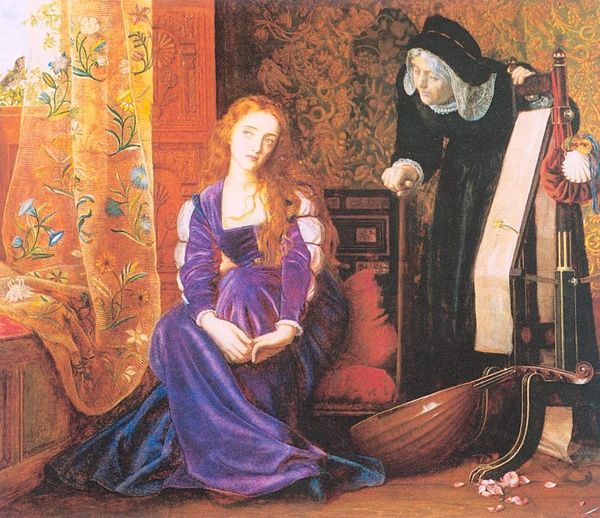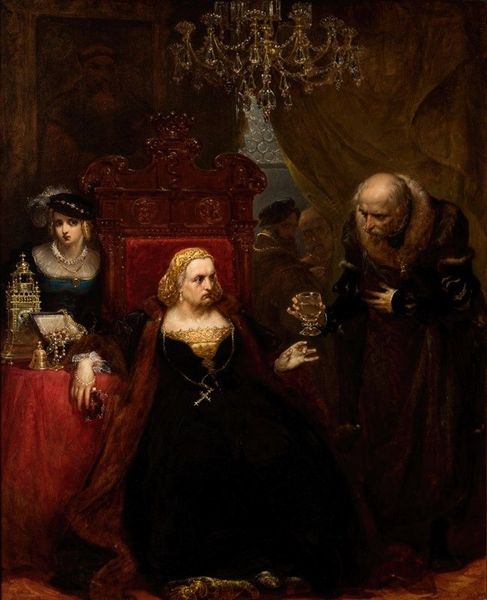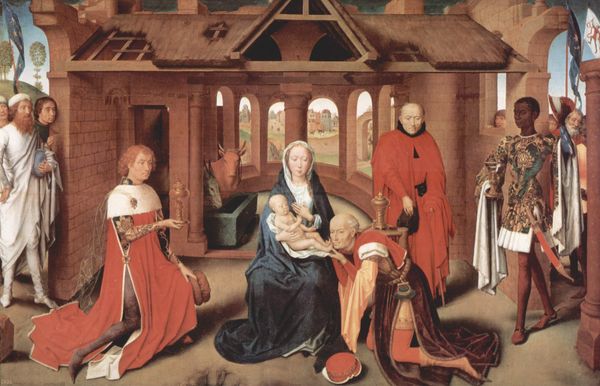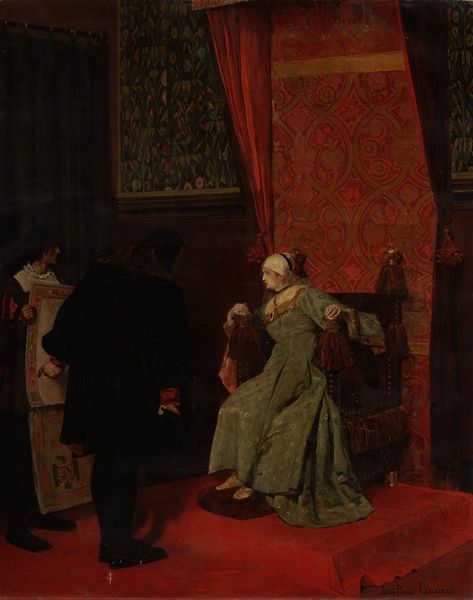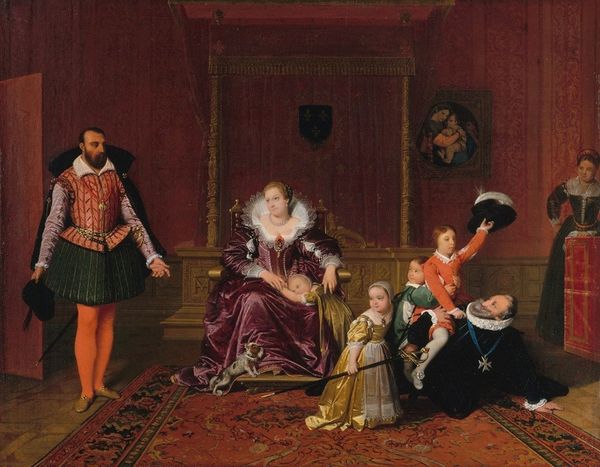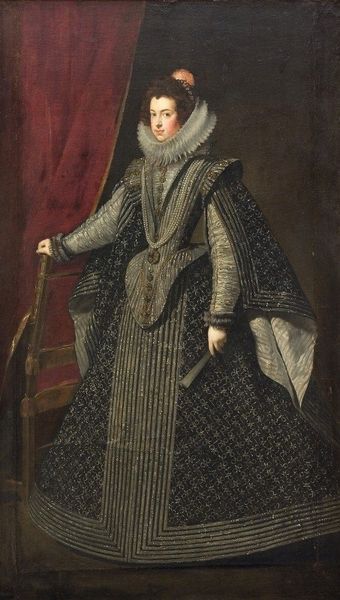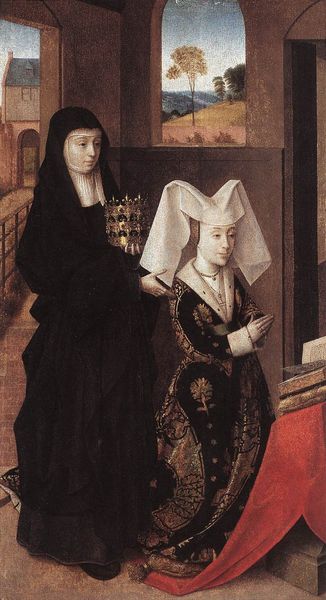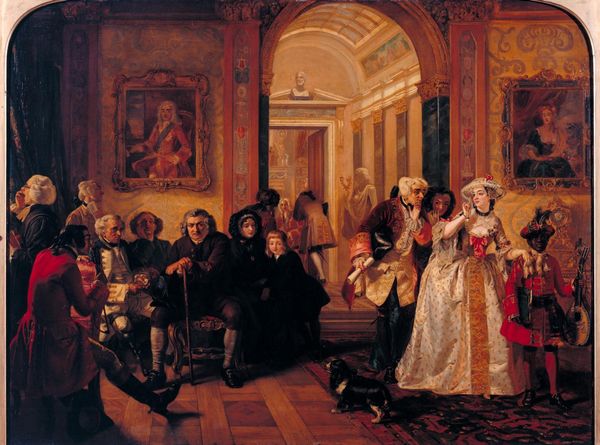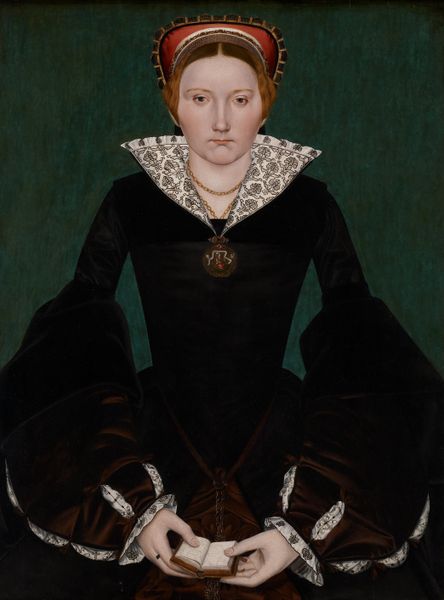
Copyright: Public domain
Curator: Here we have John Duncan’s "Mary, Queen of Scots at Fotheringhay," an oil painting dating to 1929, part of the Scottish Colorists movement, reflecting both portraiture and narrative art traditions. Editor: Immediately, I'm struck by the stillness juxtaposed with a kind of underlying… frenzy. It's like watching a snow globe, you know? Delicate but trapped in its own miniature chaos. Curator: Yes, Duncan very deliberately constructs that tension. Look at the background – it depicts what seems to be Mary's tumultuous reign, filled with conflict. But in the foreground, she’s portrayed in quiet resignation. Editor: And the colour palette contributes so much. The deep, somber blacks of her gown... against the richer reds of the other figure. It gives a palpable sense of confinement. Is it just me, or does the tapestry sort of "loom" over her, almost like a physical manifestation of her destiny? Curator: Absolutely, and Duncan's engagement with Romanticism is evident here. He’s engaging with a specific moment, a poignant portrayal of Mary awaiting execution, solidifying historical dramas to critique notions of power, gender, and martyrdom. The tapestry acts as both historical record and psychological cage. Editor: Martyrs, sure, but also incredibly complex women stuck in impossible power dynamics. She has this intensely serene face... it’s heartbreaking and infuriating all at once. Curator: Indeed. The text at the top, “In my end is my beginning,” underscores the narrative arc from powerful monarch to tragic figure, and, of course, a potential Catholic martyr. This idea of cycles of suffering and re-birth deeply affected feminist interpretations of historical narratives. Editor: Right. And that other figure is like a sentinel? Watchful and ready, not sharing the emotions. Almost an anticipation of how some perceive the next chapter? A sort of symbolic, silent partner. Curator: Precisely. This work leaves us to reflect not just on Mary's fate but also on the construction of historical narratives and how they affect contemporary understandings of female power. Editor: A painting steeped in sadness and resignation yet whispers loudly about defiance and legacy.
Comments
No comments
Be the first to comment and join the conversation on the ultimate creative platform.
